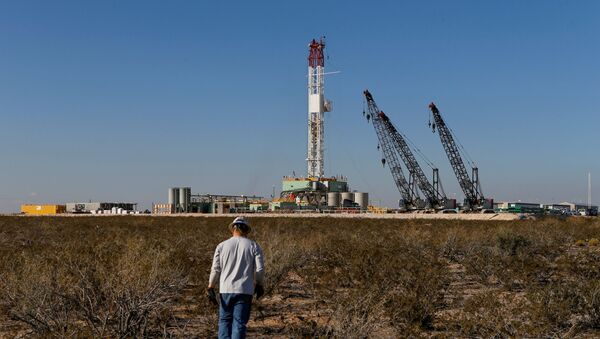Wednesday saw a drop in oil prices amid a report by the American Petroleum Institute (API) which indicated an increase in crude and fuel inventories in the US.
Earlier in the day, the benchmark Brent crude futures LCOc nosedived 57 cents, or 1.4%, to cost $40.61 a barrel after gaining almost 1% on Tuesday.
West Texas Intermediate (WTI) futures, in turn, plummeted by 68 cents, or 1.8%, to $38.26 per barrel, following an about 2% rise in the previous session.
Reuters cited Stephen Innes, chief global markets strategist at AxiCorp as saying that “the slide in Brent most likely fits into the profit-taking category after an extended run for oil with no new fundamental data that would justify a shift in sentiment”.
The drop comes after API reported on Tuesday that US crude supplies increased by 8.4 million barrels for the week to 5 June. According to the report, gasoline stockpiles dropped by 2.2 million barrels and distillate inventories climbed by 6.1 million barrels.
Inventory-related data from the US Energy Information Administration is expected later on Wednesday.
OPEC+ Extends Oil Production Cuts
The developments were preceded by Brent and WTI crude increasing last week in the run-up to an OPEC+ online video conference, during which participants tentatively agreed to extend oil production cuts for another month.
According to a draft of the declaration, the 9.7 million barrel per day (bpd) output cuts during May-June will remain in place, with cuts expected to be eased from August to 7.7 million bpd to account for an expected recovery of the global economy, hit by the COVID-19 pandemic.
This followed the earlier adopted OPEC+ deal that stipulated global oil production cuts entering force on 1 May, a few weeks after US crude prices plunged below zero per barrel in a historic drop that also prompted the collapse of the global oil market.
The 12 April OPEC+ agreement obliged the signatories to reduce crude production by 9.7 million barrels per day in May and June. Thereafter, production will be cut by 7.7 million barrels per day until the end of 2020, and by 5.8 million barrels daily from January 2021 until April 2022.
*OPEC, Organisation of Petroleum Exporting Countries, an energy cartel which includes Saudi Arabia, Algeria, Angola, Equatorial Guinea, Gabon, Iran, Iraq, Kuwait, Libya, Nigeria, Republic of Congo, United Arab Emirates, and Venezuela. The "+" denotes additional exporters cooperating with OPEC including Russia, Azerbaijan, Bahrain, Brunei, Kazakhstan, Malaysia, Mexico, Oman, South Sudan, and Sudan.


